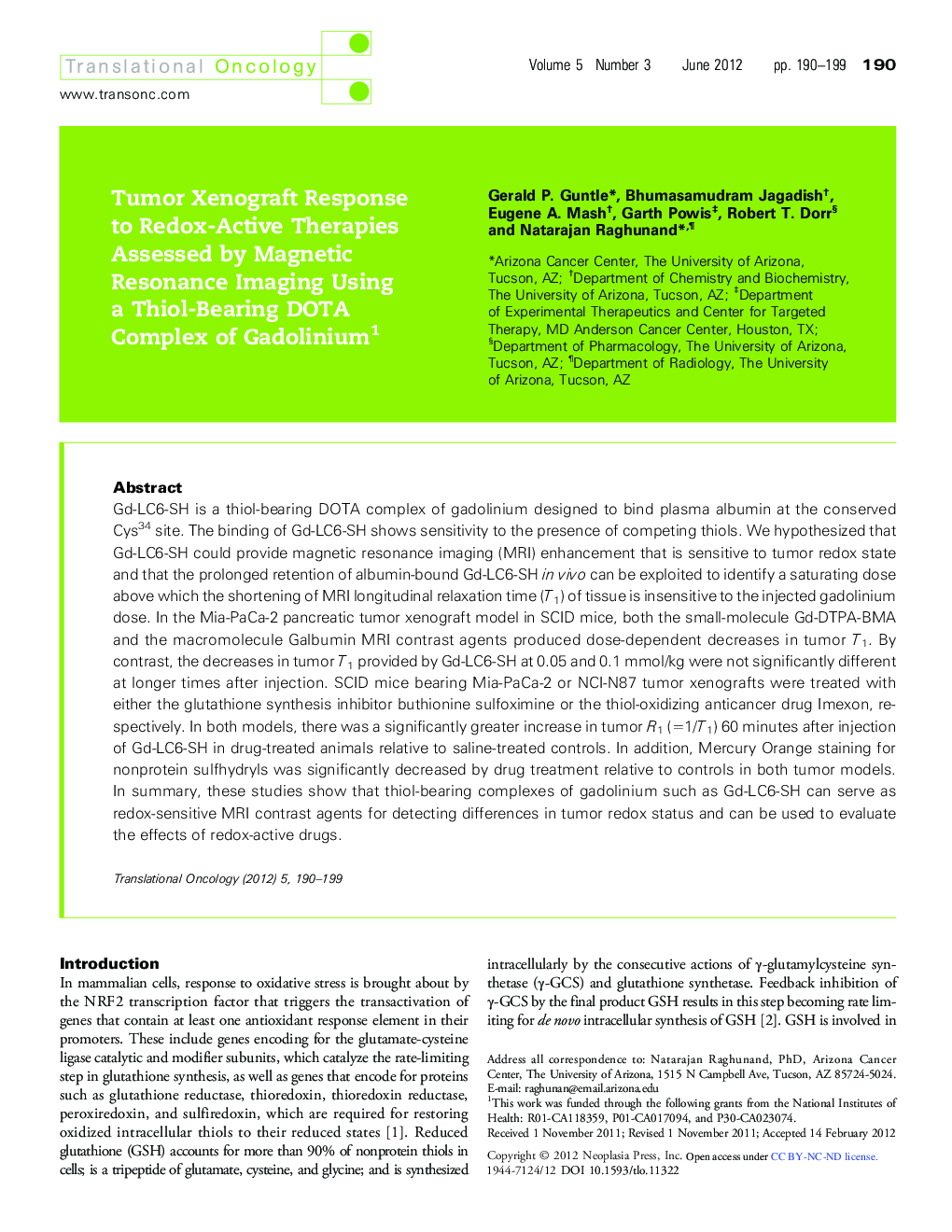| کد مقاله | کد نشریه | سال انتشار | مقاله انگلیسی | نسخه تمام متن |
|---|---|---|---|---|
| 2163867 | 1091456 | 2012 | 10 صفحه PDF | دانلود رایگان |

Gd-LC6-SH is a thiol-bearing DOTA complex of gadolinium designed to bind plasma albumin at the conserved Cys34 site. The binding of Gd-LC6-SH shows sensitivity to the presence of competing thiols. We hypothesized that Gd-LC6-SH could provide magnetic resonance imaging (MRI) enhancement that is sensitive to tumor redox state and that the prolonged retention of albumin-bound Gd-LC6-SH in vivo can be exploited to identify a saturating dose above which the shortening of MRI longitudinal relaxation time (T1) of tissue is insensitive to the injected gadolinium dose. In the Mia-PaCa-2 pancreatic tumor xenograft model in SCID mice, both the small-molecule Gd-DTPA-BMA and the macromolecule Galbumin MRI contrast agents produced dose-dependent decreases in tumor T1. By contrast, the decreases in tumor T1 provided by Gd-LC6-SH at 0.05 and 0.1 mmol/kg were not significantly different at longer times after injection. SCID mice bearing Mia-PaCa-2 or NCI-N87 tumor xenografts were treated with either the glutathione synthesis inhibitor buthionine sulfoximine or the thiol-oxidizing anticancer drug Imexon, respectively. In both models, there was a significantly greater increase in tumor R1 (=1/T1) 60 minutes after injection of Gd-LC6-SH in drug-treated animals relative to saline-treated controls. In addition, Mercury Orange staining for nonprotein sulfhydryls was significantly decreased by drug treatment relative to controls in both tumor models. In summary, these studies show that thiol-bearing complexes of gadolinium such as Gd-LC6-SH can serve as redox-sensitive MRI contrast agents for detecting differences in tumor redox status and can be used to evaluate the effects of redox-active drugs.
Journal: Translational Oncology - Volume 5, Issue 3, June 2012, Pages 190-199